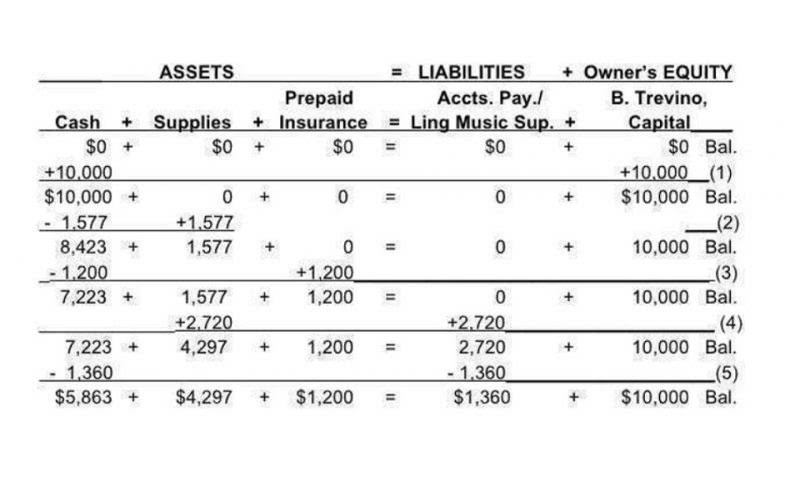The internal analysis regarding the liquidity ratios focuses on using data from multiple accounting years using the same type of accounting method. It helps when analysts are comparing the previous accounting periods to the present operations, as it allows them to track the changes that have taken place in the business. A higher liquidity ratio is an indication that the company is more than capable of handling the immediate term debt obligations. They can also use the liquidity ratios to inform the investors and promoters about the financial position of the company. For liquidity, the current ratio and quick ratio are commonly employed to gauge an entity’s short-term liquidity position, focusing liquidity vs solvency on the adequacy of current assets to cover short-term liabilities. Fundamentally, all liquidity ratios measure a firm's ability to cover short-term obligations by dividing current assets by current liabilities (CL).

Understanding Solvency
You can sell off a building or a plot of land very quickly, but that usually means taking a significant loss on the sale. No single ratio tells the whole story, and what’s “good” depends on the industry, company size, and growth stage. Trend analysis—watching how these ratios change over time—is also key to spotting risks or opportunities. Lack of solvency in the business, may become the cause for its liquidation, as its directly affects the firm’s day to day operations and thus retained earnings the revenue. Effective liquidity management relies on cash flow forecasts and budgeting to anticipate future cash needs. Businesses may establish credit lines or maintain reserves to address potential shortfalls.
What is a good solvency ratio for my small business?
If a company has more debt than capital equities, and this is still https://www.bookstime.com/articles/contribution-margin-ratio the case, it may not meet its obligations to handle its debts and ultimately end in insolvency. This ratio measures the company's ability to meet the interest expense on its debt, which is equivalent to its earnings before interest and taxes (EBIT). The higher the ratio, the better the company's ability to cover its interest expense.

How Solvency Ratios Work
If a company can access more than enough cash to pay its debts within the next year, it’s generally considered liquid. If it has little access to cash, and specifically cannot raise enough cash to pay its bills over the next 12 months, the company is considered illiquid. The first, as noted above, is a company’s cash or cash-equivalent assets it has on hand.
Although solvency and debt are not the same thing, they are very closely related. Liquidity refers to how easily or efficiently cash can be obtained to pay bills and other short-term obligations. Assets that can be readily sold, like stocks and bonds, are also considered to be liquid (although cash is the most liquid asset of all). As a result, the ratio of debt to tangible assets—calculated as ($50/$55)—is 0.91, which means that over 90% of tangible assets (plant, equipment, inventories, etc.) have been financed by borrowing.

Profitability Ratios vs. Liquidity Ratios
Solvency and liquidity are two different things, but it is often wise to analyze them together, particularly when a company is insolvent. A company can be insolvent and still produce regular cash flow as well as steady levels of working capital. Many companies have negative shareholders’ equity, which is a sign of insolvency. Liquidity ratios are best used to gauge day-to-day business health—helpful for creditors, suppliers, and management. Solvency ratios are key for long-term investors, credit rating agencies, and banks deciding on major loans or investments.
Interest Coverage Ratio:
Liquidity ratios also facilitate comparison across companies and industries. By benchmarking liquidity ratios against industry averages or competitors' metrics, stakeholders can identify strengths, weaknesses, and potential areas for improvement. One of the primary advantages of liquidity ratios is their simplicity and ease of calculation. Therefore, firms regularly analyze their ability to meet long-term liabilities. They also ascertain their liquidity—easy access to funds from investors and financiers. It is a firm's ability to fulfill financial obligations in the long run without jeopardizing shareholders' equity.
- Customers and vendors may be unwilling to do business with a company that has financial problems.
- This can be an important part of deciding which company to invest in, especially if short-term health is one of your primary considerations.
- As a result, the ratio of debt to tangible assets—calculated as ($50/$55)—is 0.91, which means that over 90% of tangible assets (plant, equipment, inventories, etc.) have been financed by borrowing.
- When Lehman Brothers went under, its debts (liabilities) were much greater than its assets.
- A lower ratio suggests greater reliance on equity, appealing to investors prioritizing stability.
- Therefore, it will have to default on at least part of its debt and receive bailout funds.
- Tech firms traditionally have low inventory, so they often rely on the quick ratio to get a more accurate sense of their short-term financial situation.
- However, excessive liquidity may also signify underutilized resources, prompting a need for balance in liquidity management.
- There are also solvency ratios, which can spotlight certain areas of solvency for deeper analysis.
- These metrics help stakeholders evaluate risk and endurance during economic fluctuations.
For instance, you can compare Microsoft's current ratio against Google's current ratio to gauge how each company may be structured differently. This can be an important part of deciding which company to invest in, especially if short-term health is one of your primary considerations. With Xero accounting software, you know exactly what’s happening with your numbers.
Key Differences and Similarities
- A business with liquidity has enough cash to pay its suppliers and team.
- Explain the difference between liquidity, solvency, and profitability analysis.
- If a company is illiquid, it won't be able to pay its short-term bills as they come due.
- These two concepts, though often misunderstood, play distinct roles in a company’s financial strategy.
- For example, suppose a country in the Eurozone has debt to GDP ratio of around 60%.
- Let’s examine two fictional retail companies — TrendSetter Apparel and StyleMax Retail — to see how you can use liquidity and solvency ratios to reveal different aspects of financial health.
Indinero’s accounting services are here to help growing businesses keep their finances in order. That said, there’s no hard-and-fast rule for what makes a good or bad solvency ratio. Some industries, such as transportation or telecommunication, have high ratios because of significant necessary investments in infrastructure. Other industries, such as technology or service-based sectors, may not have mandatory investments and enjoy lower average solvency ratios. Keep in mind that liquidity and solvency are not mutually exclusive; a company that is liquid may not be solvent (and the reverse is true as well). Insolvency, however, indicates a more serious underlying problem that generally takes longer to work out, and it may necessitate major changes and radical restructuring of a company's operations.
